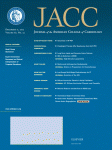JACC:去肾神经术治疗难治性高血压患者
2012-12-04 张永燊 译 JACC
目的 本研究旨在评价去肾神经术(RDN)治疗难治性高血压患者的成本效益和长期临床益处。 背景 难治性高血压累及12%的高血压患者。Symplicity HTN-2随机对照试验显示,RDN可使收缩压从基线时的(178 ± 18)mm Hg降低(32 ± 23)mm Hg。 方法 采用状态转换模型预测RDN和标准治疗对10年及终生卒中、心肌梗死、所有
目的 本研究旨在评价去肾神经术(RDN)治疗难治性高血压患者的成本效益和长期临床益处。
背景 难治性高血压累及12%的高血压患者。Symplicity HTN-2随机对照试验显示,RDN可使收缩压从基线时的(178 ± 18)mm Hg降低(32 ± 23)mm Hg。
方法 采用状态转换模型预测RDN和标准治疗对10年及终生卒中、心肌梗死、所有冠心病、心力衰竭、终末期肾病和中位生存概率的影响。研究立足于社会角度,对每个(生活)质量校正生命年的成本效益比(美元)增幅进行了估算,均采用每年3%的折现率。采用确定和概率敏感性分析评价稳健性和不确定性。
结果 RDN可明显降低事件概率(10-年/终生相对危险:卒中,0.70/0.83;心肌梗死,0.68/0.85;所有冠心病,0.78/0.90;心力衰竭,0.79/0.92;终末期肾病,0.72/0.81)。RDN与标准治疗的患者中位生存期分别为18.4年和17.1年。折现后,终生成本效益比增幅为每个生活质量校正生命年3071美元。除收缩压降幅、基线收缩压和作用持续时间外,结果对其他输入参数的变异相对不敏感。成本效益增幅的95%可信区间为每个生活质量校正生命年节省成本31460美元。
结论 该模型表明,在多种假设中,经导管去肾神经术均为一种经济有效的难治性高血压治疗策略,、有可能降低心血管发病率和死亡率。

作者:张永燊 译
版权声明:
本网站所有注明“来源:梅斯医学”或“来源:MedSci原创”的文字、图片和音视频资料,版权均属于梅斯医学所有。非经授权,任何媒体、网站或个人不得转载,授权转载时须注明“来源:梅斯医学”。其它来源的文章系转载文章,本网所有转载文章系出于传递更多信息之目的,转载内容不代表本站立场。不希望被转载的媒体或个人可与我们联系,我们将立即进行删除处理。
在此留言





#去肾神经术#
35
#JACC#
30
#ACC#
40
#高血压患者#
48
#难治性#
0